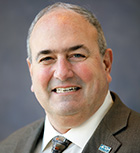BCSP Viewpoints: Pushing the profession forward: The role of the newest generation

EDITOR’S NOTE: Advice and perspective from the Board of Certified Safety Professionals.
As the workplace, the workforce and work itself change, the occupational and environmental health and safety field must expand its focus. It’s crucial to ensure the health and well-being of a diverse workforce and to understand and mitigate safety issues in light of new work arrangements. We must forecast future trends, prepare for innovations in an ever-changing world and always focus on long-term success.
The keys to moving forward largely rest with the use of technology, the engagement of workers and emerging professionals. Despite the complexity and sophistication of our work – including inspections and investigations – advanced technologies aren’t always available, and the resources necessary to replace aging or obsolete equipment are inconsistent.
Thankfully, key technologies have emerged to offer better hazard management and mitigation. Among the many advancements are:
- Wearable devices for heat stress prevention
- Infectious disease modeling and aerosol tracing technology to optimize heating, ventilating and air conditioning systems for safety and sustainability
- Online training and artificial intelligence to deploy, monitor and manage ergonomics
Maximizing the impact of these new technologies requires an engaged workforce. OEHS pros must use available data and evidence to demonstrate the worthwhile nature of the profession. This will aid in developing a robust future workforce, building necessary partnerships, and gaining support and resources to deliver programs.
OEHS pros must also strongly push for uniformity in data collection so their efforts can inform intervention practices effectively and efficiently across all sectors and all workers. By engaging workers and offering real-world solutions through consistent data, the OEHS profession can provide the workforce with a consensus on best practices to prevent serious injuries and fatalities.
As the workforce ages, leaders must provide accessible leadership training opportunities to support emerging OEHS pros. Active participation in professional organizations creates opportunities for networking and mentorship.
The profession’s future will also be defined by the standardization of qualifications and a clear definition of responsibilities. Organizations such as the Board of Certified Safety Professionals and the Board for Global EHS Credentialing are continuously working on these standards, updating as needed to ensure technology and engagement are a focus of the certification process.
These are not new ideas. In fact, the late William (Bill) Weems, former director of Alabama Safe State Program, once provided sage insight into the ideas of technology, engagement and emerging pros. His advice was to find and pursue what excites and fulfills you, to pursue lifelong learning, and to be empathetic and honest with employees to build a relationship of trust, committing even in times of disagreement to decisions based on evidence-based science.
With those concepts driving the future of the workforce and the technologies it develops, the outlook of the OEHS profession is bright and full of career opportunities with great fulfillment.
This article represents the views of the author and should not be construed as a National Safety Council endorsement.
 Don Elswick, CIH, CSP, CHMM, CIT, is an EHS solutions specialist for ELSMART Associates LLC, and previously was the executive director of the University of Alabama Safe State Program. He’s chair of the American Conference of Governmental Industrial Hygienists and serves on the state of Alabama’s Technical Advisory Committee on Science, Technology, Engineering, and Math.
Don Elswick, CIH, CSP, CHMM, CIT, is an EHS solutions specialist for ELSMART Associates LLC, and previously was the executive director of the University of Alabama Safe State Program. He’s chair of the American Conference of Governmental Industrial Hygienists and serves on the state of Alabama’s Technical Advisory Committee on Science, Technology, Engineering, and Math.
Post a comment to this article
Safety+Health welcomes comments that promote respectful dialogue. Please stay on topic. Comments that contain personal attacks, profanity or abusive language – or those aggressively promoting products or services – will be removed. We reserve the right to determine which comments violate our comment policy. (Anonymous comments are welcome; merely skip the “name” field in the comment box. An email address is required but will not be included with your comment.)


